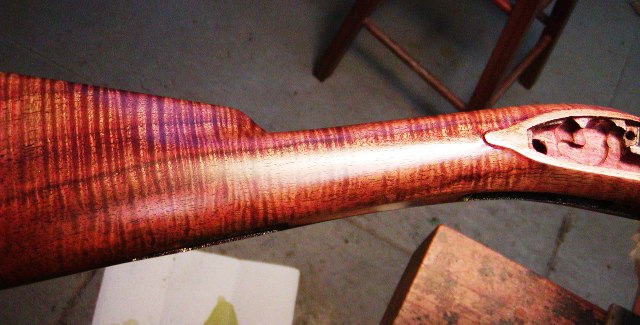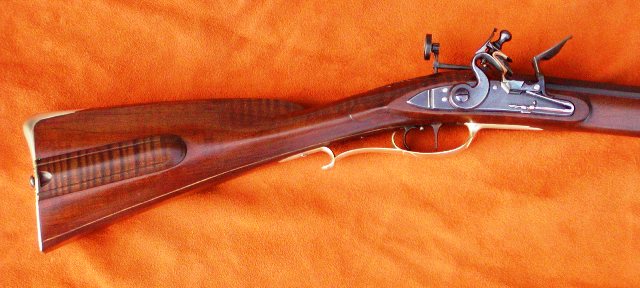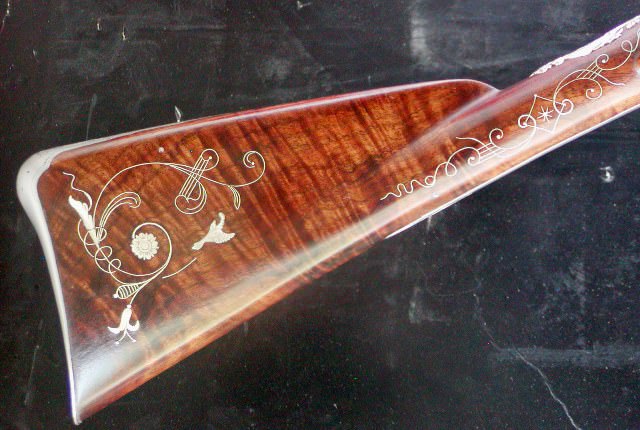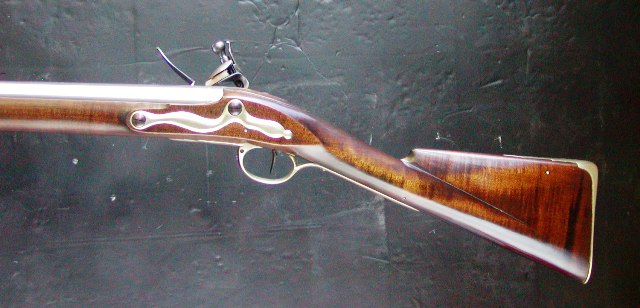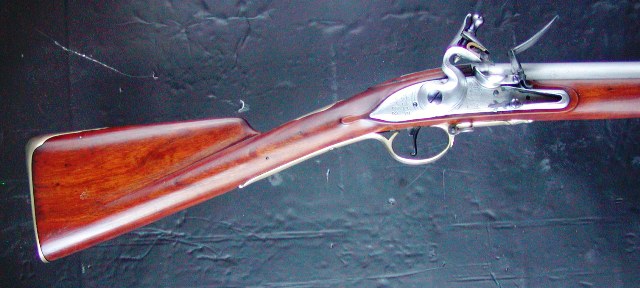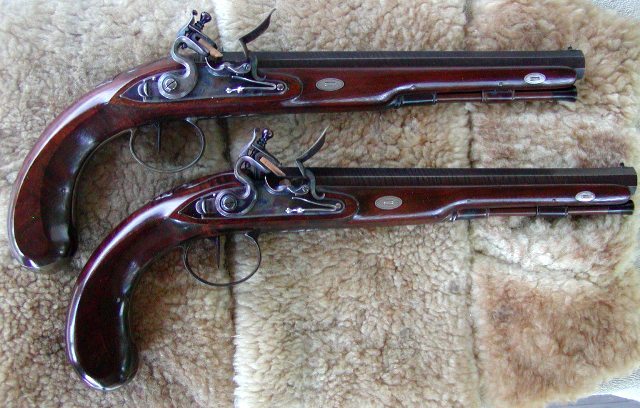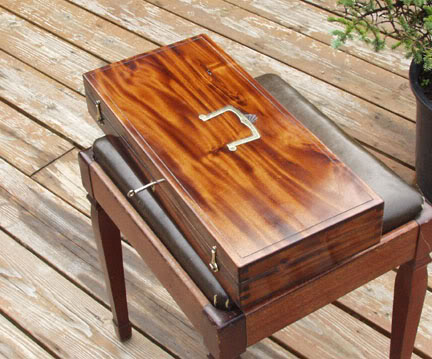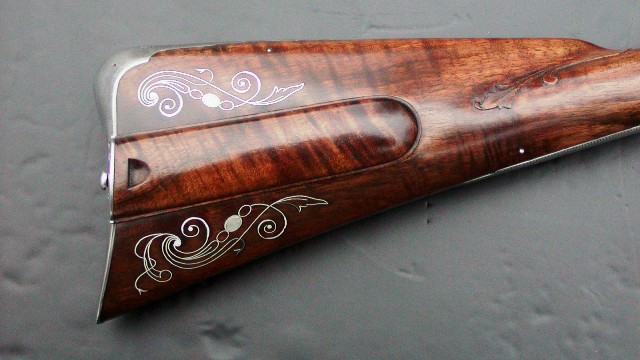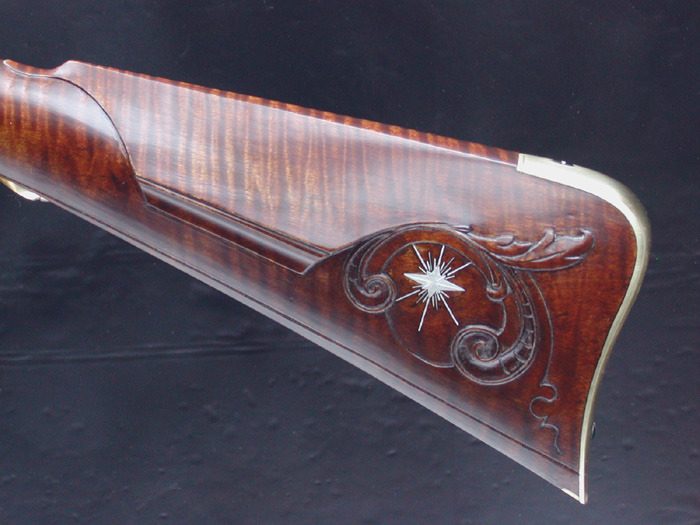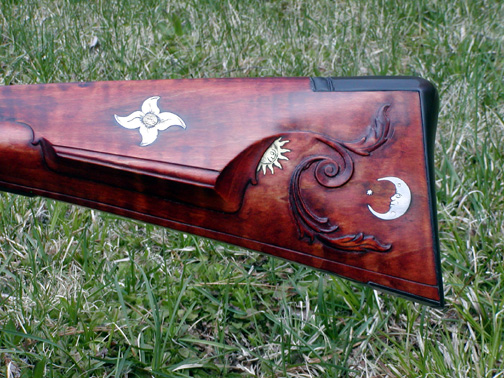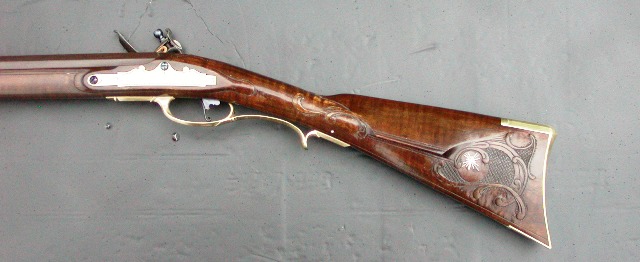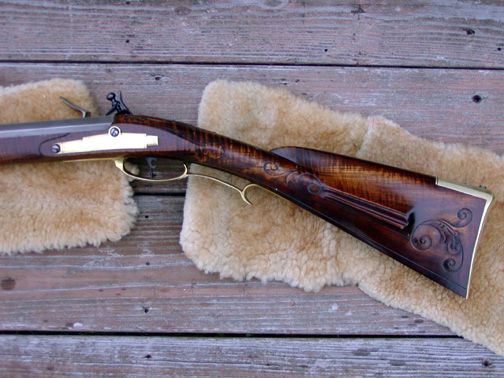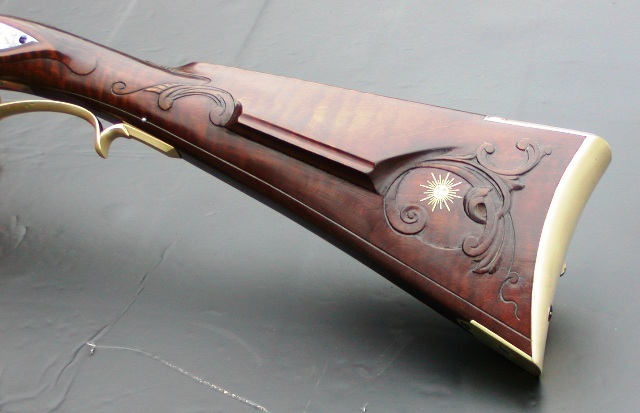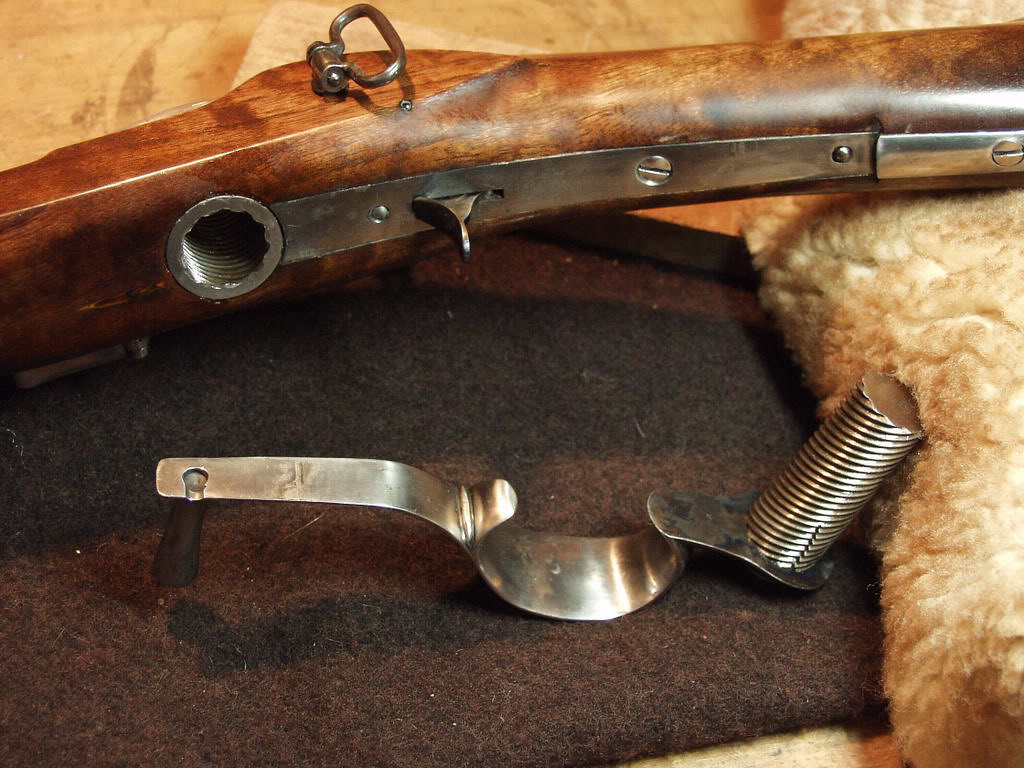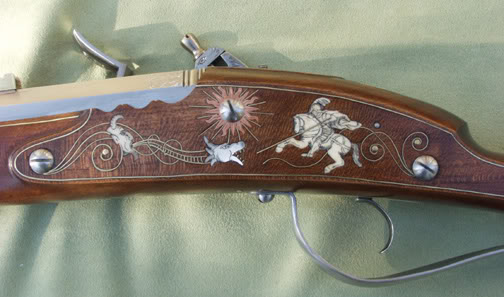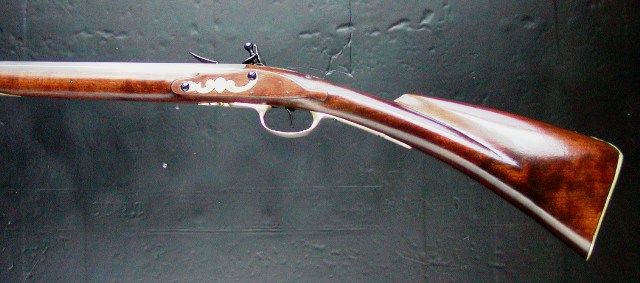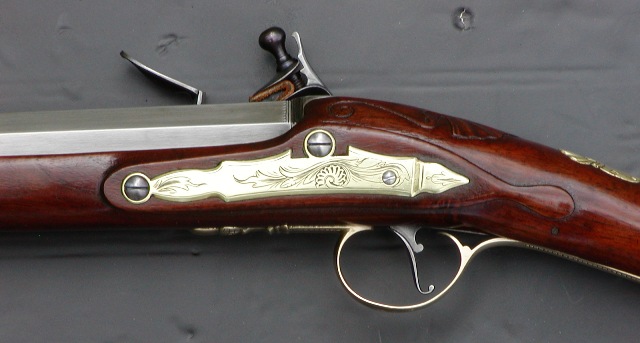I have three basic finish types that I will use, depending upon what I want.
Grain filled with seedlac/shellac with an oil varnish (that I make or modify) as a top coat. I believe that this is how a large majority of 18th century American guns were finished, though I honestly don't like fooling with the varnish top coat. This keeps the grain clear and bright, not darkening the wood like linseed oil will do.
Boiled linseed oil. And I mean really boiled linseed oil, with lead carbonate and aged turpentine (no, I don't boil the oil with turpentine in it... I've learned that lesson!). I use thinner applications at first leaving nothing on the surface, and for the final few applications, I use the really thick stuff, leaving it stand on the surface until ALMOST dry, then cut it off with burlap... which is a LOT of hard work, and is the real hand rubbing in a "hand rubbed linseed oil finish". It requires a lot of elbow grease and patience, but to my eye, it generally looks the best, and is my favorite finish.
Grain filled with oil varnish with oil varnish top coat. Makes a much darker stock than filling the grain with lac, and takes much longer to dry, of course.
Lately, instead of making it from scratch, I've been cheating with oil varnish, using Tried and True "Varnish oil" with some more rosin dissolved in turpentine added in (the "Varnish Oil" is too soft for a top coat as it is). This has actually been working pretty well for me.






